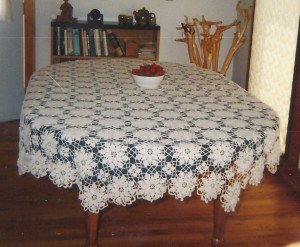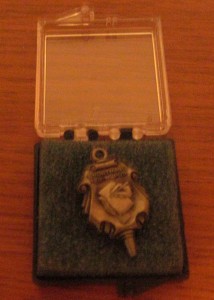Michele asked:
I only have right-brained children, but I have to wonder why all children wouldn’t benefit from passion-inspired learning versus teacher-enforced learning. I’m honestly trying to learn here. Do left-brained children buck this type of thing like our right-brained children buck traditional methods?
I reply:
As I sit and contemplate this question, I’ve decided I can’t give a definitive answer, but I’m going to provide a lot of ideas and examples to play around with in order to discuss the potential answer. The main reason for my position is that the only left-brained person I know and have experience with is myself. And the stories of others who are similar to me.
I’ll start off with an excerpt from my book showing one example of how a left-brained person can enjoy right-brained creative outlets, but it’s represented in a different way. This is from The Right Side of Normal, Chapter Six: The Creative Outlets:
I’m a strong left-brained learner. I always had an interest in crafting with needles and taught myself to crochet at a young age. Later, I taught myself to knit, cross-stitch, and embroider. It wasn’t until I consciously discovered the differences in brain preference that I noticed what made me different from a right-brained-style crafter.
Left- vs. Right-Brained Crafting. As a left-brained person, I first learned from books with instructions. I also didn’t want anyone to teach me because I don’t learn from a “watch, then do” focus, but from a part-to-whole dissection of written instructions. Second, I can only make what is printed on a written instruction. I don’t know how to improvise and create my own patterns.
With that in mind, I had always found quilting and sewing fascinating, and tried a time or two to figure out how to teach myself. It seemed impossible, and I gave up fairly quickly. With this new information, though, it makes complete sense.
Quilting and sewing take quite a bit of spatial and visual awareness. They’re expressions of self-creation. A good quilter sees the patterns she wants to create. A seamstress visualizes how the pattern goes together from a whole-to-part perspective. I often find that my right-brained friends can’t read patterns, but they can create unique patterns.

Interestingly, most anything I completed with my ability to craft was for someone else. Evidence of a need for a focus on a relevant product? I think so.
This examples gives us the understanding that left- and right-brained people may be able to enjoy the same interest, but the way they go about it may be very different, and/or the strengths that are brought to the table of the interest may focus on different, or even opposite, vantage points. So, in the same vein of the original question posed, here’s an example of a left-brained person being able to enjoy or benefit from the creative outlets, a foundational expression for right-brained people, but the process looks different. Also, I particularly enjoyed the product versus the process.
These core traits, product versus process, is where my mind has wandered as being the primary difference in passion-inspired environments. First, I contemplated where I may have experienced a passion-inspired learning environment. Sadly, since school was my core place for learning, I had rare opportunities to dabble with passion-enthused mentors. But, the first person and situation I immediately thought of was my fourth grade teacher, Mr. Hornack.
Mr. Hornack was my first male teacher, so that stands out to me. But far more than that, he had innovative and creative ideas he brought to the classroom that I had never experienced before, or rarely since. One of the ideas he came up with was to award points throughout the week. I’ll admit that I don’t remember how one earned these points, but I think they were based on one’s behavior, such as being helpful. We all had ample opportunity to earn these points. Then, each Friday for the last hour of school, we had free time in which he brought in an array of special activities in which one could “spend” their points. He would
list about ten things on the board, and how much each activity “cost” in points. Sometimes he brought popcorn and a movie to watch, playing board games, and other such fun activities. I don’t remember a lot of the diversity, because one of the staples on the board was reading. It had the lowest number of points for its cost. I always chose reading. Mr. Hornack was always trying to entice me to choose something different, but I would wave him off and let him know that I really enjoyed reading and was satisfied.
Another major event in Mr. Hornack’s class was the book writing project. He asked everyone in the class to write a story, illustrate it, and bind it. After all of the stories were turned in by the due date, a panel of sixth grade students would choose the best book. That book would then be made into a movie that the whole class would be part of to produce, direct, and act. I remember feeling nervous and unsure of this type of assignment. I did book reports really well, but creative writing was something I had never tried. I was really uncomfortable. I ended up sticking with my left-brained trait of reality versus imaginative. My book was set in my town, with people I knew in the town, and threw in a monster. I remember being especially uncomfortable with having to illustrate it. I stayed up most of the night before it was due to finish it. My perfectionism had kicked in and I wanted it to be “perfect.”

This is a book I wrote in sixth grade for their book-writing month. I dedicated it to my mother who made it possible...it's because it was a real story from her life about a cat named Queen.
The time to reveal the winner came, and I was surprised to discover that it was my book chosen. I now wonder if they chose the book based on the capacity to turn it into a movie. Since it had a lot of “reality-based” story-telling in it, that would make the translation of it easy. I know the boys all had a lot of highly imaginative stories that were far from the reaches of our little town. I did remember having a strong desire to be the star in the show, but Mr. Hornack declared that the author had to be the producer. I remember not having any interest or understanding of what that would entail, but typically followed him around as he did it.
One thing I can tell you is that I felt the passion and enthusiasm of Mr. Hornack for teaching creatively. I consider him my favorite teacher. Being a left-brained student who did well in school, I didn’t feel his enthusiasm or passion changed how I felt about learning in general, but I adored him and very much enjoyed his class. And I do know the more creative ventures made me uncomfortable, though I could use my strengths of reality versus imagination or product versus process to do quite well with it. That’s the thing in this situation; Mr. Hornack was considered “revolutionary,” and I’d hope to think the right-brained children flourished with his assignments. But since school values my style of product and traits, I could be less creative and imaginative and still be “successful,” because you’re not graded on your level of creativity, but on how closely your product replicates what is intended.
I think of the three other teachers who were passionate about what they taught. Mr. Rittenour for a journalism class in ninth grade, and both my typing and shorthand teachers in eleventh and twelfth grades, Mrs. Hunt and Mrs. Gillingham. Including Mr. Hornack, I remember especially wanting to please my teachers with a great product. And it makes sense as I think about it. Since being product-driven is the strength of a left-brained person, and being process-driven is the strength of a right-brained person, it fit well into the schooling environment to meet the passionate enthusiasm of your teacher with giving them great products.
I teamed up with my cousin, Jennifer, in my journalism class, and because most of the assignments were again based on a reality-based subject, with creativity surrounding it, I flourished. It was all about word play, and humor, and putting yourself out there. My extroverted self thrived in these assignments. Mr. Rittenour was beside himself with our creativity in presentation. But, I wonder how much of it was the fact that I felt some level of confidence in my social standing and so I could put myself out there more than those who didn’t. Couple that with my being an extrovert, and using humor as my social disguise, it all worked. But the biggest thrill for me was getting that reaction from my teacher, not the process of the creation of the product.

I won two top awards in my secretarial classes because my two passion-enthused teachers inspired me to push myself further than I would have on my own.
I also wanted to please my secretarial teachers because they saw in me a natural ability in the field and were always sharing their enthusiasm and passion that they hoped I would feel as well. I do owe them because no one ever told me I should consider any kind of college until them. I guess I just wasn’t from that kind of family background. Again, I don’t think it has to be a “bad” thing that my focus was on the product in these passion-inspired group settings. In fact, because of the higher level of expectation of the teacher because of their passion for the topic, it certainly raised my game in what I presented. It just looks and feels different. Both have value.
It reminds me of a recent post someone made on my Facebook page for The Right Side of Normal when someone asked about what LEGO to buy for a girl interested in building. The comparison was brought up that this person knew a boy who would build with LEGO, and his focus was on building an intricate and imaginative creation, and after it was complete, would proceed to tear it apart. This person knew of a young girl who also built intricate and imaginative creations with LEGO, and then she would proceed to use it in her play as a prop. What we see here is a prime example of process versus product. They are both benefiting from the intricate and imaginative creation of a LEGO project, but they do it for very different reasons and gain from it in very different ways. Both have value.
Karen shares how her right-brained daughter developed her interest through passion-inspired environments and resources. Notice her process focus (my emphasis added in the story):
It’s interesting: I can trace out these stages of her passion for drama. When she was very young she was wildly creative, inventing her own plays, putting them on for the family, making up songs and even languages. Around age eight or nine she started going to acting camp and classes, where the kids put on short, abridged plays. I felt the adults still did too much here, not letting the kids figure out how to block scenes or how to direct and produce; but still, they were the actors and highly involved in putting on the short shows. One teacher let kids write songs for the plays. Another let them choreograph a dance. There needed to be more of that, but that there was some was good. Now, my daughter’s favorite thing in the world to do is to see a live play. Her taste is growing ever more sophisticated, and she’s avidly building a whole mental repertoire of works, comparing and contrasting them continually, thinking them through, learning both about literary works and about relationships in a really fantastic way. She doesn’t have any visible projects connected with this right now — no playwriting, no costume designing, no acting herself. But the other day she asked me whether there was a community college class which would allow her to learn more about how to construct a character of her own. So it’s all coming full circle. Amazing to watch this happen.
Question: What examples do you know about that represents how a person learns from a passion-inspired learning environment? Do you also notice the process versus product traits involved, or another set?







6 responses to “My Readers Ask: Don’t All Children Prefer Passion-Inspired Learning?”